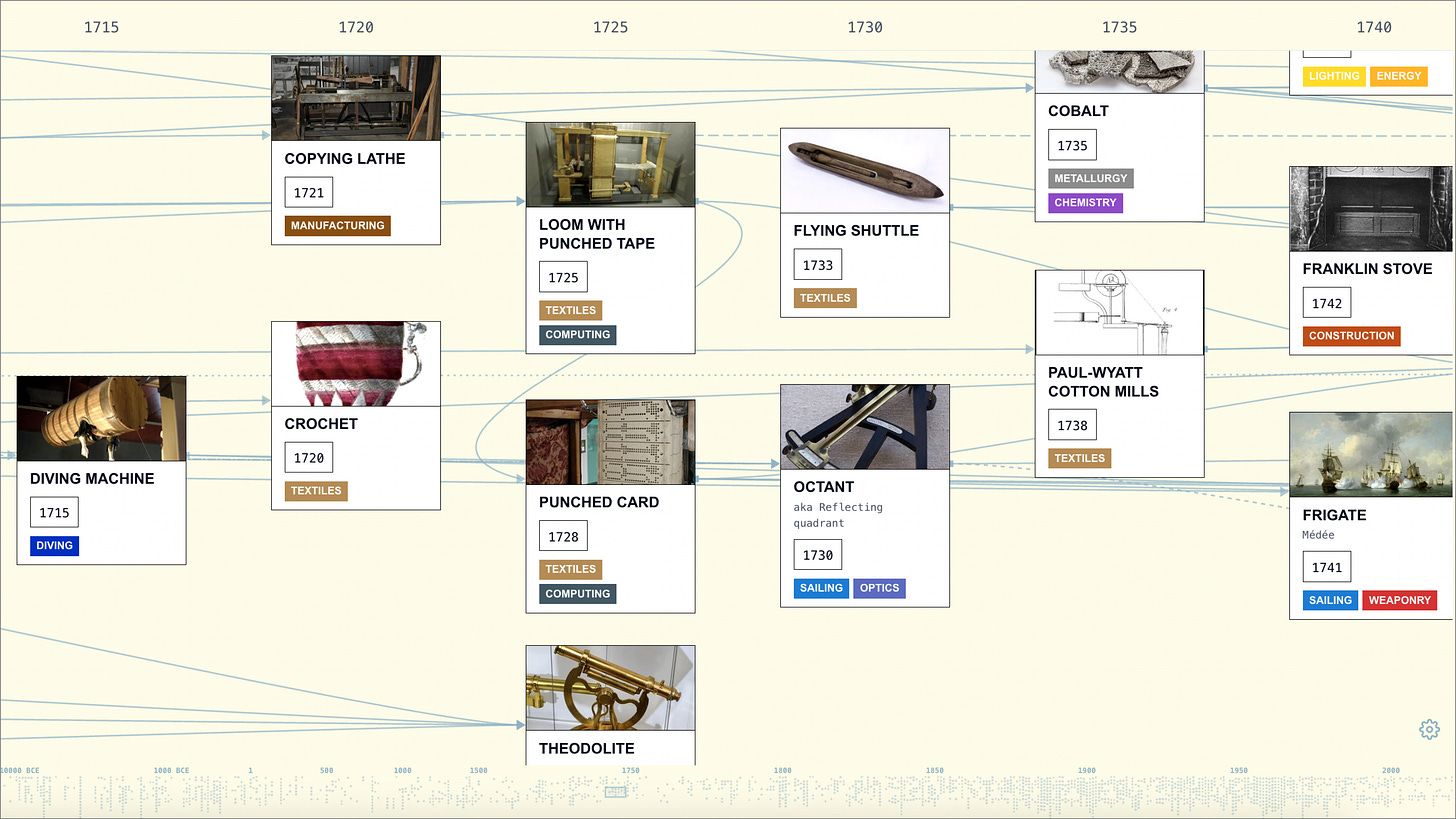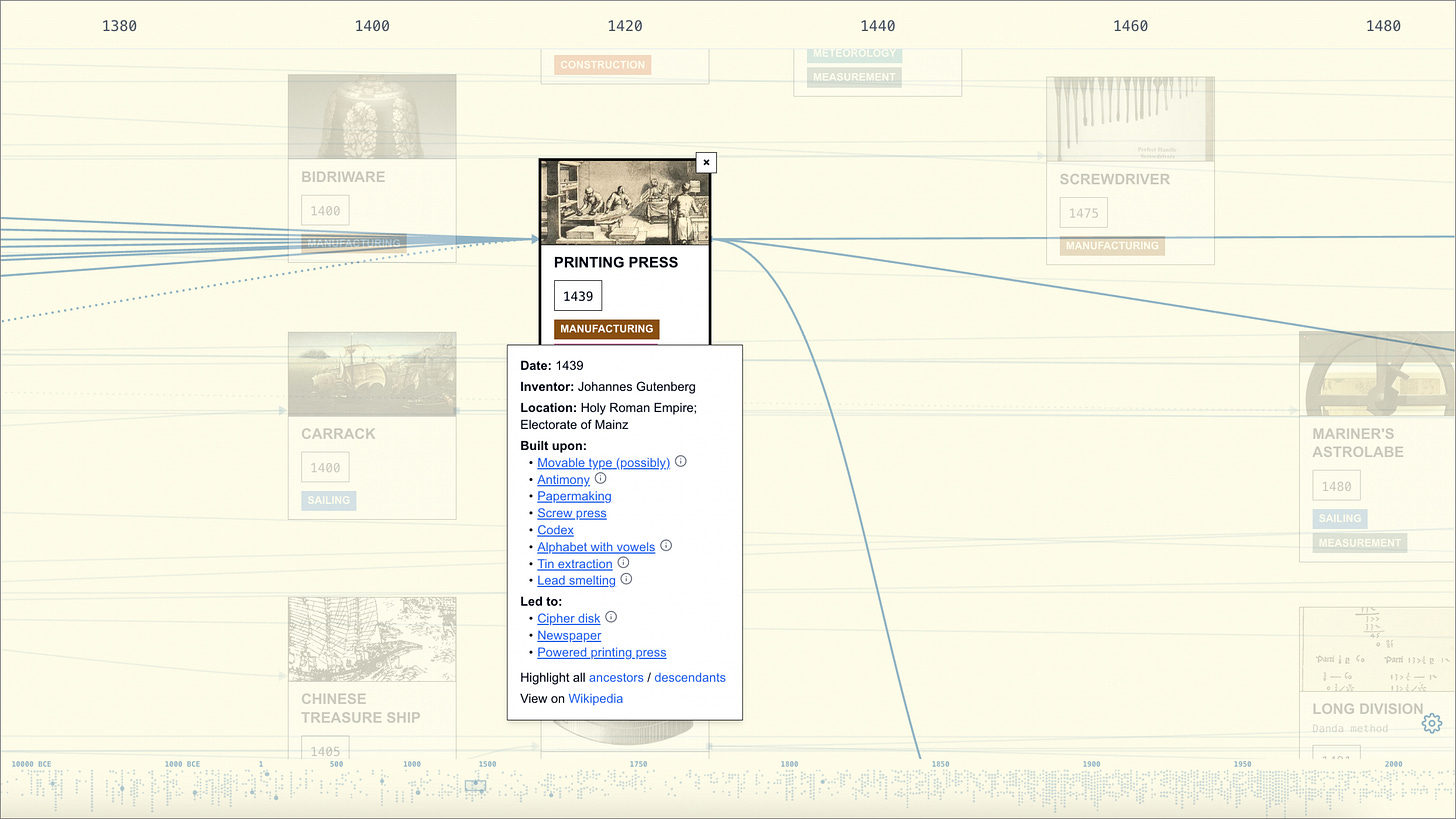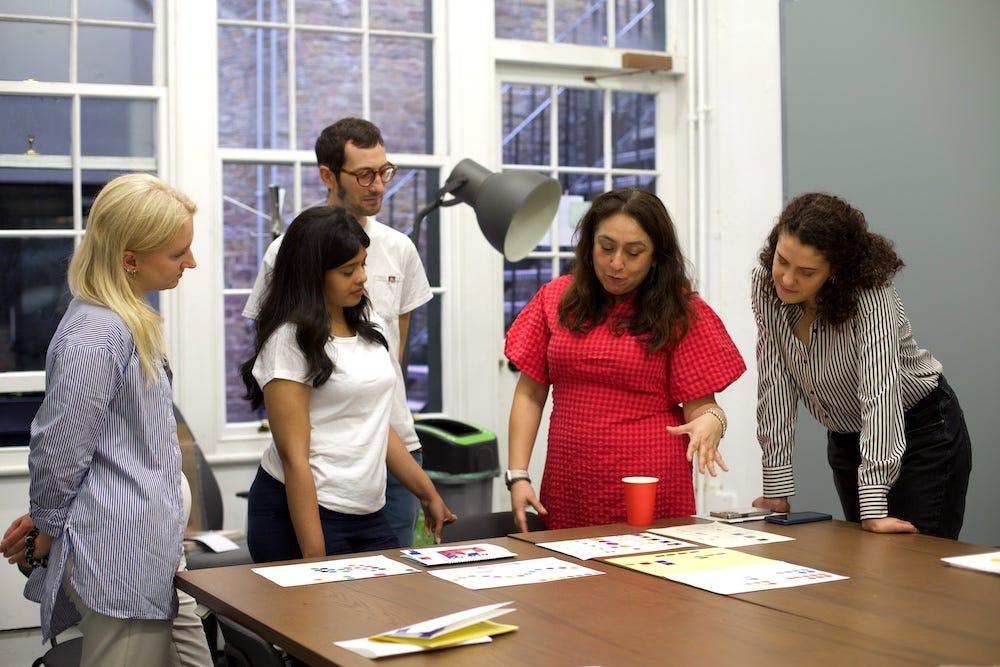Visualising three million years of invention
FF32 – Historical Tech Tree by Étienne Fortier-Dubois

This month we’re journeying through the history of human invention, from the stone tools of prehistory, to the self-driving cars of today. The Historical Tech Tree, conceived by artist and researcher Étienne Fortier-Dubois, lays out a vast, branching graph of innovation, tracing how each invention builds upon its predecessors and showing where it then leads.
Each node in the interactive timeline represents a technology, connected by lines showing unexpected patterns and the non-linear nature of innovation. Technologies don’t simply replace one another, they emerge, diverge, and cross-pollinate, forming an interconnected web of necessity and serendipity.
Far from complete, the map is designed to keep growing. At the time of writing, the visualisation covers 1,963 technologies with upwards of 2,315 interconnections between them, spanning roughly 3 million years.
The tool invites us to explore how ideas build on one another, and where our stories about invention fall short. Unsurprisingly, the tree has inspired lively discussions critiquing its gaps – for example, the sometimes narrow definition of technology overlooked fields like textiles. These gaps underscore the project’s value, inviting contributions to help narrate progress.
Visual storytelling like this doesn’t just trace the past, it reshapes our perspective on the present and future.
Learn more about the tech tree here.
Upcoming workshops
Tue 28 Oct 2025, 9am-1pm (GMT), Somerset House, £249
Data visualisation doesn’t have to be expensive, there are many free tools available. However, selecting the right tools, knowing how to uncover narratives within the data, and effectively engaging and communicating with your users are what make a visualisation truly impactful.
User experience design for online tools and products
Tue 7 Oct or 25 Nov 2025, 9am-1pm (GMT), Somerset House, £249
In this interactive half-day workshop, our trainers will guide you through the key principles of UX and explain why it's important. They'll demonstrate how to interview users and use these insights to create personas, considering user needs, motivations, and pain points. You'll also participate in exercises designed to help you lead user needs workshops within your organisation.
This newsletter is brought to you by award-winning design studio Applied Works. Want to submit something to Rows & Columns? Share it with us here




